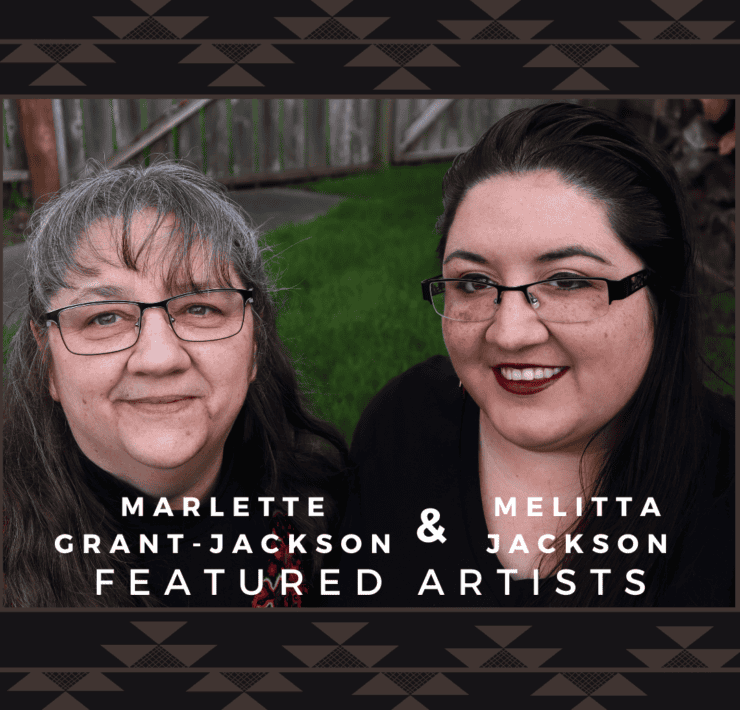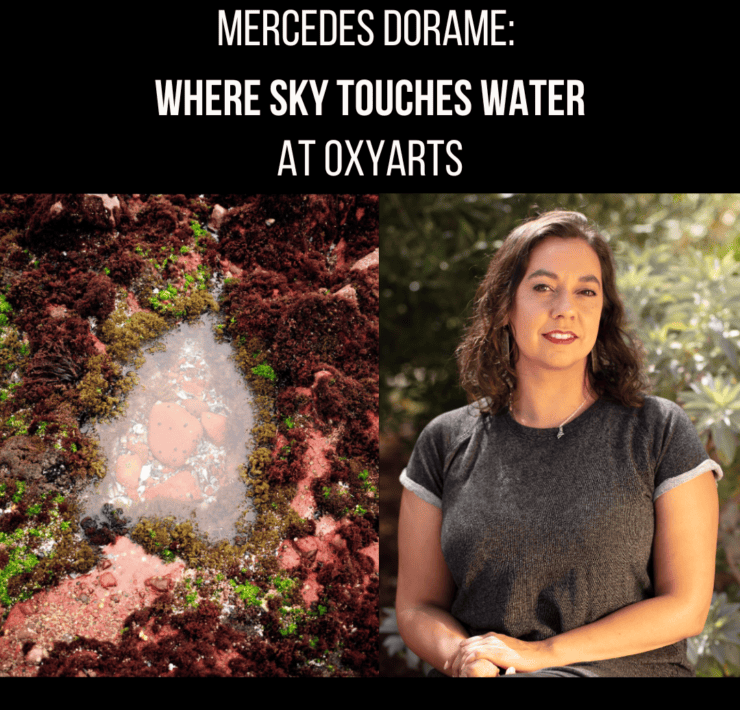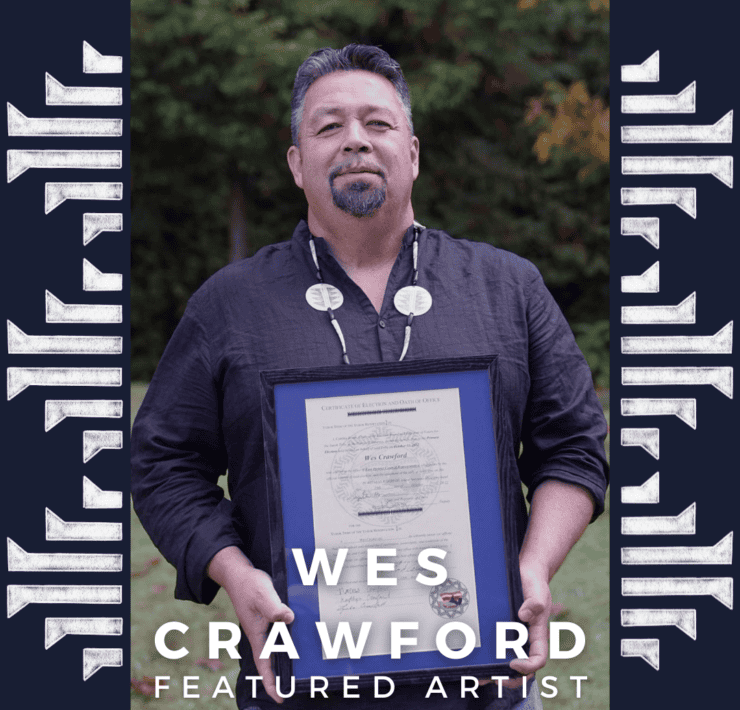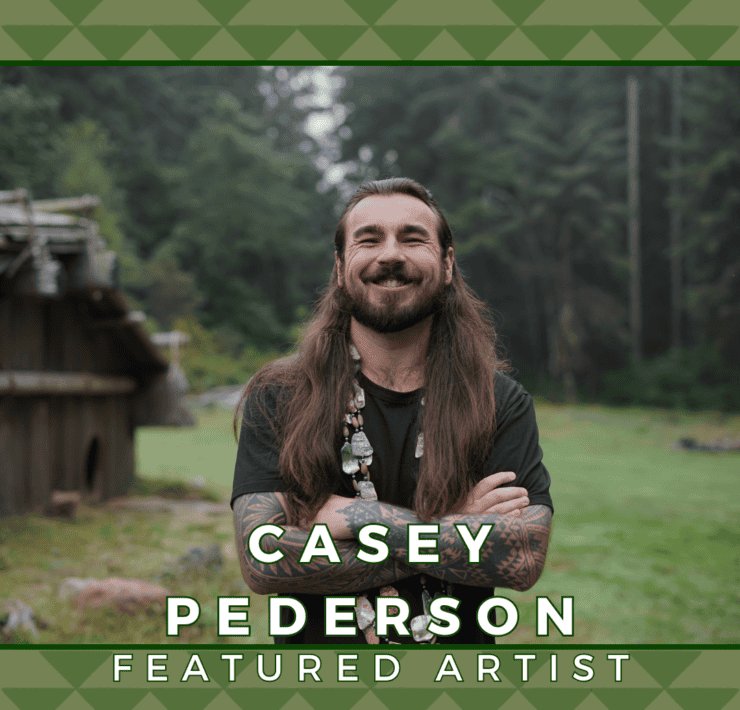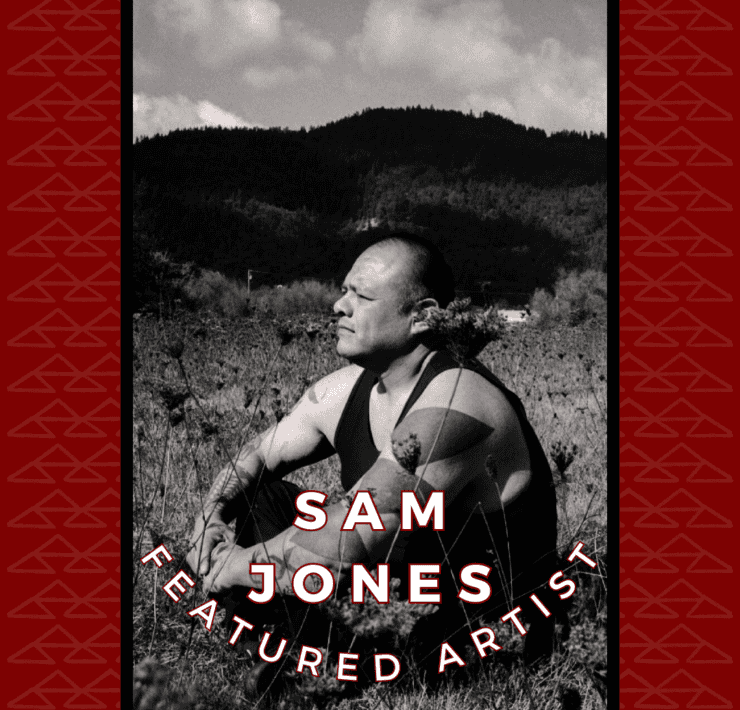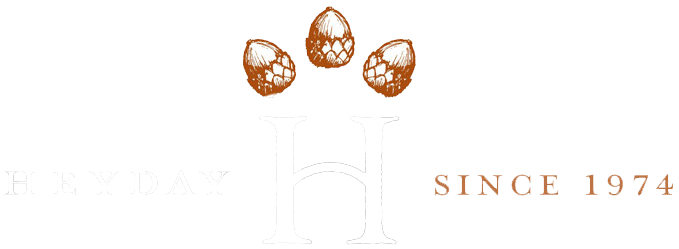
by Tavi Lorelle Carpenter
A mother, artist, model and basket weaver, Sinéad Talley is a multifaceted designer of Karuk, Yurok and Irish-American descent based in the northern coast of California. Growing up in and around Orleans along the mid-Klamath River, Sinéad’s passion for design, personal expression and beadwork emerged at an early age and would eventually evolve into the establishment of Imkúuhkirih Designs in 2020. She skillfully harmonizes traditional and modern materials and techniques to be reflective of her Karuk culture and homelands while seamlessly integrating trending aesthetics. As a model, she has been able to collaborate with established indigenous fashion designers showcasing their works in print and on the runway throughout the U.S. and Canada.
Sinéad learned to basketweave from relatives beginning at the age of eight. When she started learning to bead, she would take the lessons and principles she’d learned from basketry and apply them to her beading. From an early age, she was interested in how these small forms of creativity interact with each other and how fashion and photography converge as a means of showcasing identity to the world.
“I’ve always been interested in clothing, make up and self-expression, [and looking at how] all of [the] various ways we choose to show who we are to the world [connect].”
For a time, life required Sinéad to step away from her artistry as she pursued other endeavors. Eventually graduating college in 2016, she returned home securing a position in grants and agreements coordination with the Department of Natural Resources. It wasn’t until 2019, when a challenging pregnancy would ask her to slow down, that she turned back to creative processes.
“I’m not a person who naturally sits or spends a lot of time still. [But] because I [suddenly] had time to sit around, I started getting back into beadwork. For all of these years [when I wasn’t beading], I had been like: ‘I’m going to just start doing it a little bit more. I just need to get these supplies ready.’ Because there’s a lot of materials involved in the process of jewelry making, so, [I] had compiled all of these things and just started to work on projects more while I had that time [during my pregnancy]. So that became a special experience, a way to return to that creative work.”

After having her son, Sinéad decided to keep going and rather than returning to her 9-5, decided to open her own business.
“I started selling on social media and eventually started my own online [store] and started sharing more of my photography, in addition to my beadwork. I’ve done mostly earrings, [which are very] time intensive. But I have also made housewares, wall hangings, and accessories. I’m looking to branch out. The plan is to also move toward apparel and different accessories soon.”
Her modeling career started when she saw an advertisement for the Southwest Indigenous Indian Association for Indigenous Arts Indian Market Fashion show and was booked as one of the runway models. Speaking on the experience, she shared how inspiring it was to be in a space celebrating indigenous artistry in fashion.
“As someone who was already interested in [and] starting to do a lot of photography and designs, [it] was really exciting and inspiring to be in [this space] where it’s primarily indigenous people and creatives coming together and just really being able to be their full selves. That was really reinvigorating. It’s also a revitalization of its own kind, it’s an opportunity for indigenous peoples to share the places that they’re from and formats that were previously unsupported [in mainstream art forums]. Of course, the fashion industry hasn’t been accepting of indigenous people. These spaces that are being created by indigenous people to share indigenous artwork, and cultural backgrounds-it’s just a very, very unique space to be able to be joyous and celebrate these different art forms and [indigenous] cultures coming together. It [was] very inspiring.”
Sinéad has been fortunate in that she’s been able to predominantly work with other indigenous artists and designers as a model. For her own artistic vision, it revolves around the weaving together of traditional and contemporary materials, guided by a desire for her work to resonate with a diverse audience, as well as an understanding of sacredness.
“I come from a background where I was around culture a lot growing up, and learned to weave from a young age and have certain principles in my mind when I use solely traditional materials and practices. If I’m going to sit down and make a piece of regalia, that’s probably not something I would market or necessarily even share on social media. I feel like that has its own time and place and meaning and purpose. So, when I approach work that I’m going to sell, I want it to be something that’s approachable for not only Native people, but also non-Native audiences. My work is inclusive – I want people from all genders and backgrounds to be able to feel like [it’s for them]. It doesn’t need to be exclusive.”
But one aspect of the traditional knowledge Sinéad’s learned that she always ensures to honor, is the importance of being in a good way when creating.
“I put a lot of good energy and medicine into my work, definitely! If I’m going to sit down and work on a project, I’m going to try to do that when I’m not in a negative headspace. I try to take those lessons from some of these [traditional] materials and weave elements together with some of these more modern aesthetics. What I’ve learned and what I’ve come to understand from people who have taught me is that, especially with these materials, you’ve spent so much time and energy and dedication; you’ve brought them together and you want to be able to put what’s in your mind to form in a way that respects the materials and respects yourself and it respects the process. And so, part of that is not sitting down to work on something when you’re frustrated or feeling resentful or bitter, because those things are going to come out into the work. It’s going to show up, even if it’s not in a physical sense, it’s going to show up in the way that it feels and the energy it brings out into the world. I’m not going to share something that I feel I haven’t put my best self into.”

Sinéad acknowledges however, it can be difficult when you are not in a good headspace and the toll it can have on one’s creativity.
“Part of why it was such a liberating experience to get to a place where I was making space for this creative work is because there were so many years where I was just diminished in my creativity. What I’ve learned from reading and from introspection is that diminished creativity is actually a trauma response. I think a lot of people experience that, and it does take some doing to get back into a good headspace. So I try not to approach it from a shame-based framework or state of mind either… [it] doesn’t mean anything by your character, that you can’t get into a good spot. I also feel strongly that even if you’re not in a state of mind where you feel like sharing what you’re creating with the world, you can still, even if you’re frustrated or feeling like you’re holding some negative space, you can put [that] energy [into creating] things. I know people that sit down and work on projects that are specifically projects they work on when they’re not feeling the greatest. There’s so much variability and it has so much to do with intention.”
Sinéad encourages that getting into a positive head space can be an incremental process, something that you build upon. But I also appreciated her advice on being intentional about the projects you work on depending on your headspace. Certainly with something being shared, it’s probably a good idea to create with positive intentions. But art is a means of expression and can be very therapeutic as well. It’s always important to be reminded of that.
In terms of advice she has for other indigenous artists?
“I would say try to give [yourself] as much grace as possible. Especially when there are like days or weeks or months, sometimes there have been hiatuses that I’ve taken four or five months at a time where I have other things going on that are completely overtaking my life. So, I think being really gentle with yourself is important in those stages and knowing that you can return to [your art making] and that [it’s] still going to be there for you and you can still grow and develop and put all those ideas to form.”
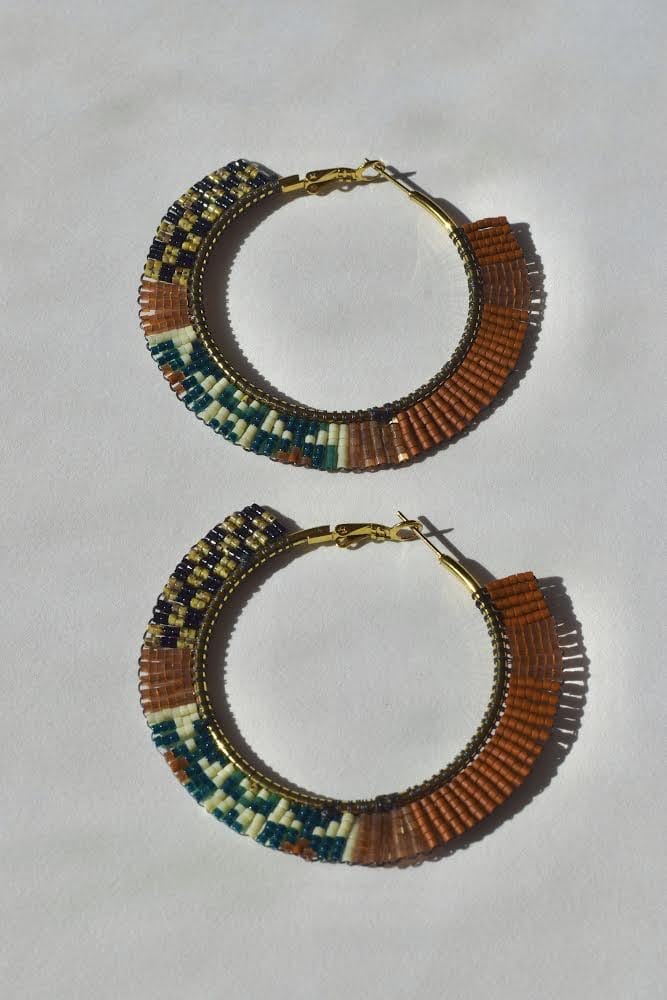
When I asked Sinéad the best way for people to support her, she gave me a beautiful response:
“People in our communities are just so great about [sharing each other’s work]. [We] all uplift one another and just make sure other people are seeing this stuff! That’s been a really cool experience and has been some of what’s helped me reach a broader audience, even to the small degree I have so far. So I think, [supporting] those kind of things, where people can be just excited for one another and willing to celebrate [each other]”
Please help us celebrate Sinéad and her amazing artistry by following her on Instagram and visiting her website: https://www.imkuuhkirih.com/



